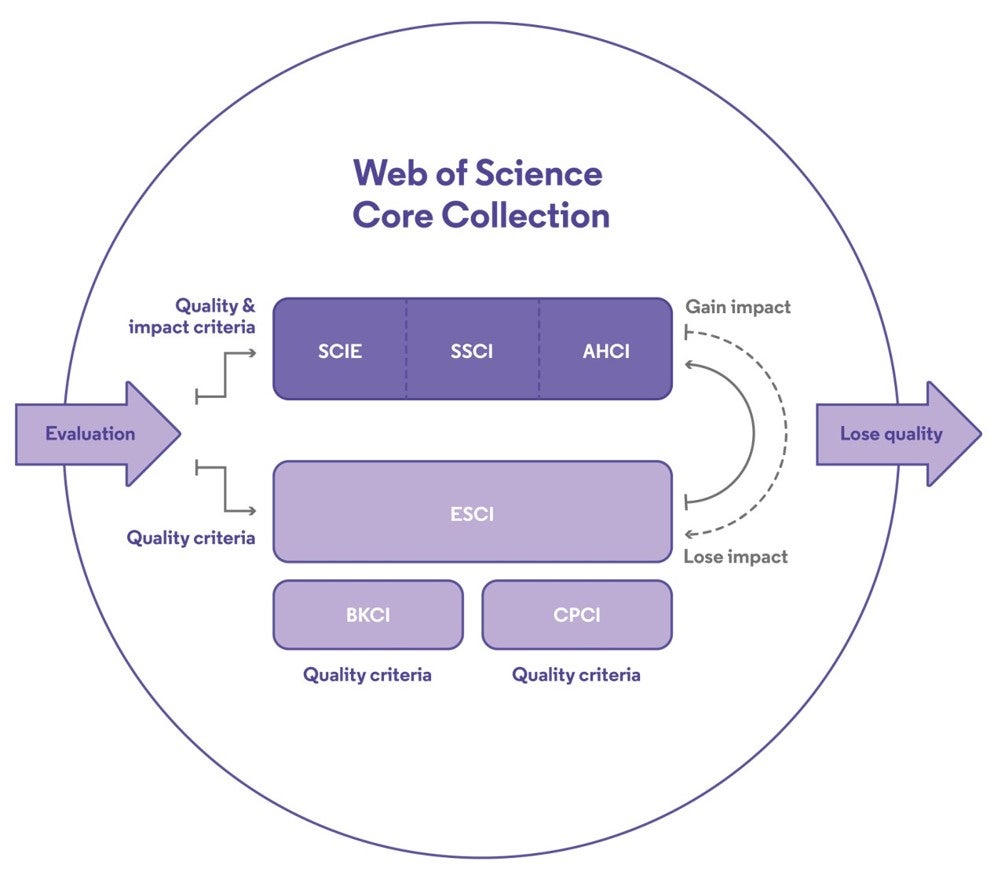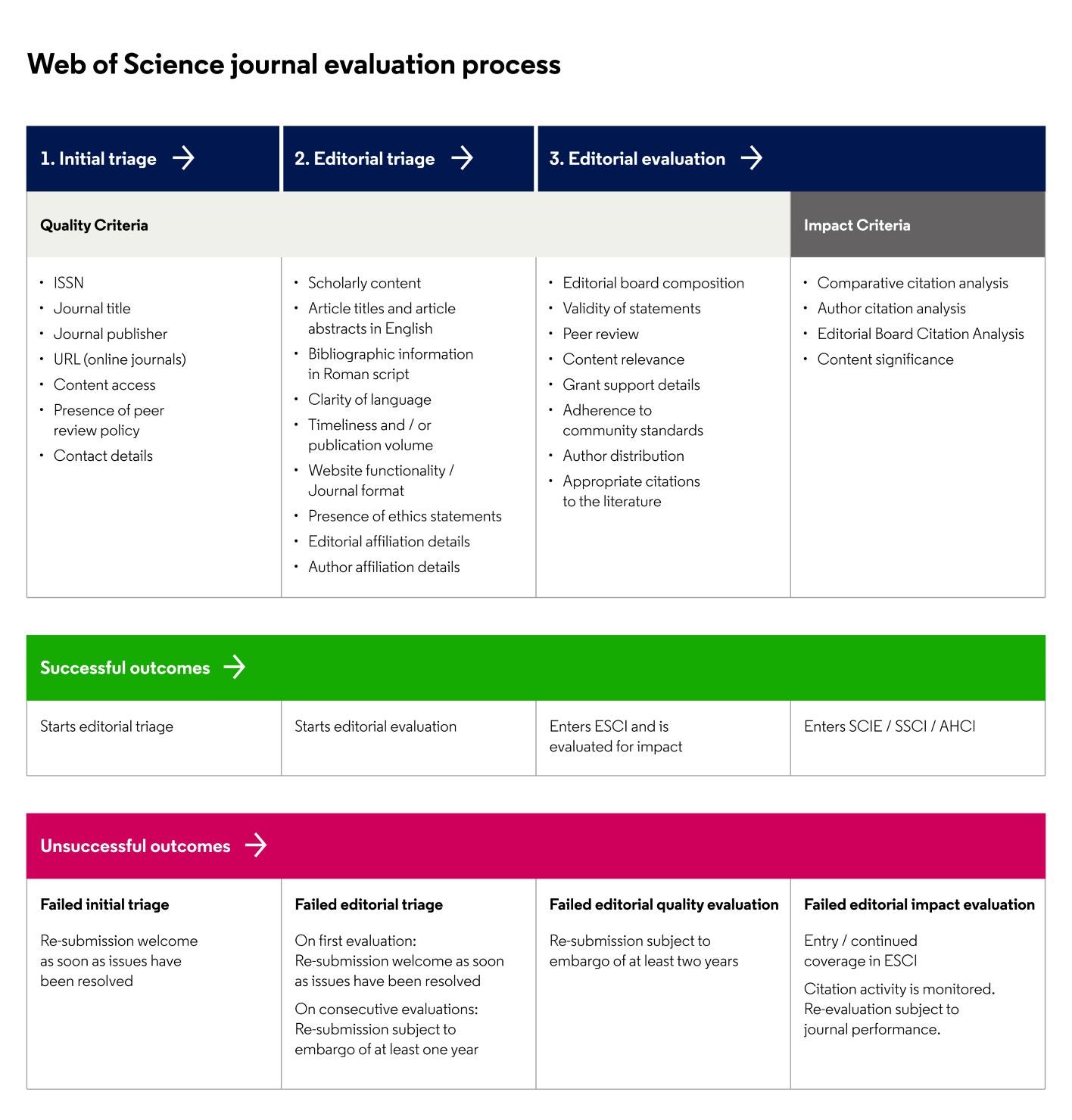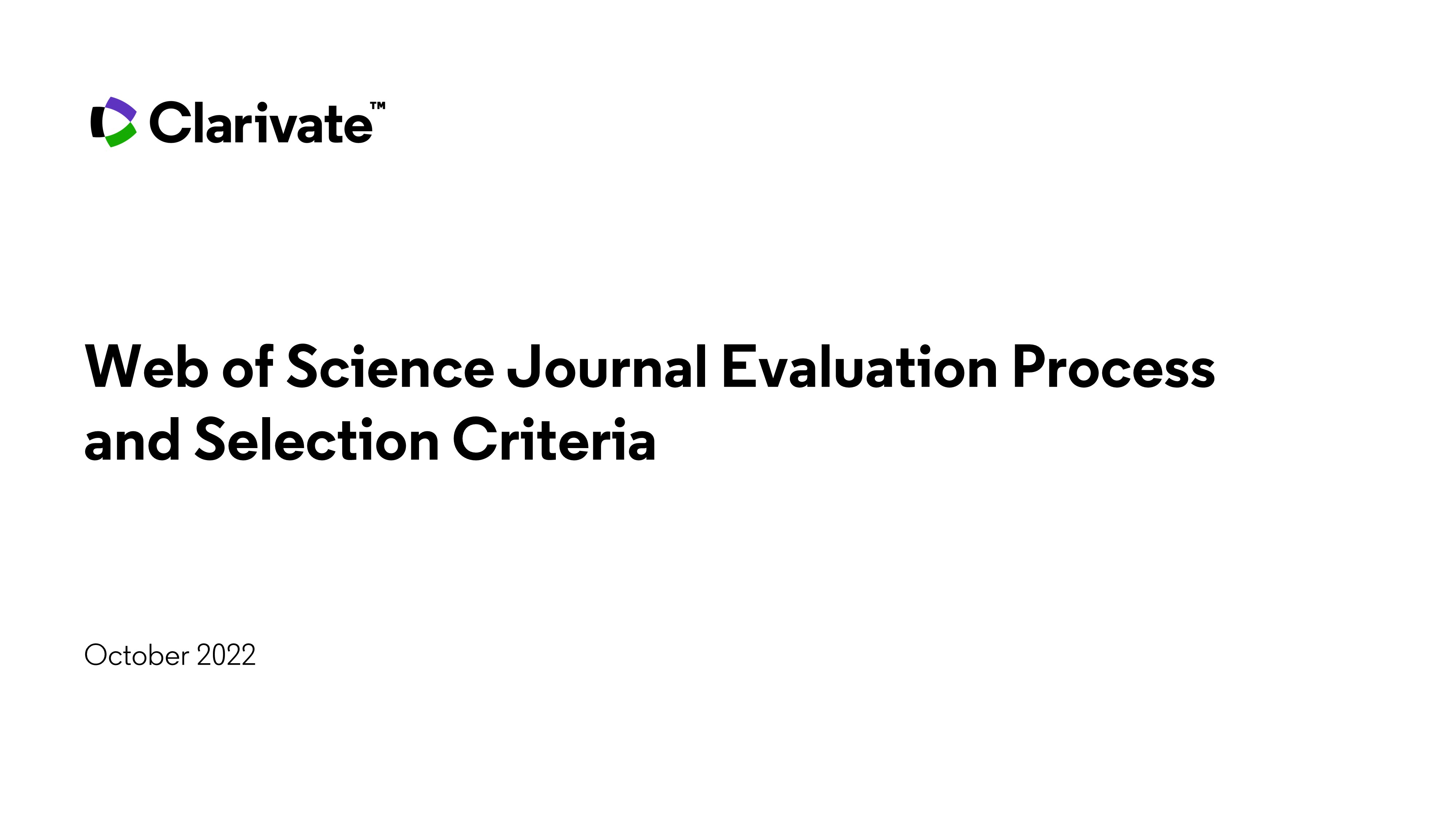Collection Dynamics
These are dynamic collections subject to periodic re-evaluation to ensure journals are in the appropriate collection. ESCI journals that gain impact move to SCIE, SSCI or AHCI. Similarly, SCIE, SSCI and AHCI journals that decrease in impact move to ESCI. Any journal that fails to meet the 24 quality criteria will be removed from the Web of Science Core Collection. Journals in ESCI are re-evaluated for possible inclusion in SCIE, SSCI or AHCI when their citation activity indicates that the impact criteria may be met, regardless of the time since their last evaluation. In this process, journals are re-evaluated for quality first and impact evaluation is subject to quality being met. If both quality and impact criteria are met, the journal moves to a flagship collection.
In recent years our strategy has been to re-evaluate ESCI journals that have an estimated Journal Impact Factor™ (JIF) that places them in Q1 or Q2 in the JIF ranking of their relevant flagship category. These re-evaluations have been on hold as of 2022 as our current focus is on evaluating journals for quality rather than impact. We will prioritize new journals submitted for evaluation, in parallel with ensuring we remove any content from Web of Science that no longer meets our quality criteria. All new journals selected for coverage are currently added to ESCI and impact evaluations for new and existing journals remain on hold as of 2022.
If valid concerns are raised regarding an indexed journal, either by users or through monitoring by our in-house editors, the journal will be re-evaluated according to our selection criteria. Where valid concerns are raised about the quality of the content published by the journal, new content will not be indexed during the course of the re-evaluation. When the evaluation is complete, the publisher will be informed of the outcome and the journal will either:
- be removed from coverage if it no longer meets the quality criteria
- or remain covered if it continues to meet the quality criteria.
If the journal meets the quality criteria, any missing content will be indexed. If the journal is removed from coverage, content will not be backfilled. In the most serious cases of breaches in the journal’s editorial standards, as determined by our selection criteria, published content may be removed from Web of Science™. Timeframes for completing a re-evaluation will depend on the particular circumstances of each case.


